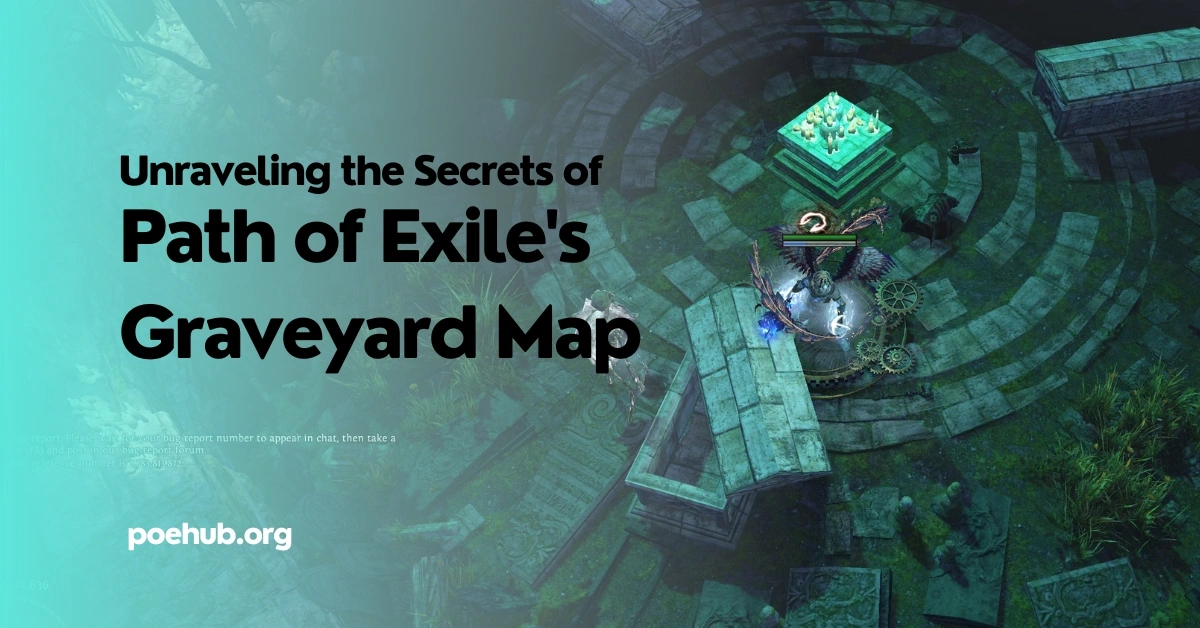In the expansive world of Path of Exile (PoE), the Atlas of Worlds stands as a complex and ever-evolving endgame system. Navigating the Atlas can be a daunting task for both new and experienced players alike.
However, mastering the intricacies of this map system is crucial for accessing high-level content, obtaining valuable rewards, and enhancing your overall gaming experience.
This guide aims to provide a comprehensive overview of the PoE Atlas Map, helping players confidently navigate its challenges and reap the benefits it offers.
What is PoE Atlas Map?
The Atlas of Worlds is a massive chart comprised of interconnected maps, each representing a different area in the game. Player’s progress through these maps by completing them and unlocking adjacent ones, gradually unveiling a web of interconnected regions.

The ultimate goal is to conquer the Atlas by defeating the formidable bosses that reside within its most challenging maps.
Path of Exile (PoE) Atlas Map is a crucial and intricate component within the action role-playing game Path of Exile, developed and published by Grinding Gear Games.
The Atlas of Worlds is a complex map system that serves as the game’s endgame content, providing players with a vast and interconnected network of maps to explore, each offering unique challenges, rewards, and environments.
The Atlas consists of various regions, and each region contains a set of maps that players can progress through. Players start by completing lower-tier maps and gradually work their way up to higher-tier ones as they strengthen their characters and gear. The ultimate goal is to reach the center of the Atlas, where formidable boss encounters and the most powerful maps await.
One of the distinctive features of the PoE Atlas Map system is its dynamic nature. The Atlas can undergo changes each league or season, introducing new maps, modifying existing ones, or altering the layout of the regions.
This ever-evolving structure keeps the endgame experience fresh and challenging for players, encouraging them to adapt their strategies and explore new content regularly.
In addition to the standard maps, the Atlas also incorporates special maps known as Unique Maps and influenced maps. Unique Maps offer unique challenges and rewards, while influenced maps are affected by various Conquerors who strive for dominance in different regions, adding an extra layer of complexity to the endgame experience.
Players can manipulate the Atlas through various means, such as completing specific maps, using Shaper’s Orbs or Elder’s Orbs, and engaging with the Conquerors of the Atlas. These actions influence the Atlas progression, alter the distribution of maps, and unlock access to more challenging content.
The Atlas is, therefore, a central aspect of the Path of Exile endgame, providing a diverse and engaging experience for players seeking high-level challenges and rewarding loot.
Basics of PoE Atlas Mapping
Path of Exile (PoE) Atlas Mapping is a crucial aspect of the game that involves exploring and completing maps to progress through the Atlas of Worlds. Here are the basics:
- Acquiring Maps: Maps can be found as drops from monsters or chests in the game or obtained through various other means such as vendor recipes, divination cards, or Zana’s map device.
- Map Tiers: Maps are categorized into different tiers, ranging from Tier 1 to Tier 16, with higher tiers offering more challenging content and better rewards. Progression through these tiers is essential for unlocking new areas on the Atlas.
- Map Mods: Maps can have various modifiers that affect their difficulty and potential rewards. Pay attention to these modifiers, as they can significantly impact your ability to clear a map successfully. Modifiers can include increased monster damage, reduced player resistances, or additional rare monsters.
- Sextants and Watchstones: Sextants are items that can be applied to watchstones, which in turn can be placed on the Atlas. These items add additional modifiers to the maps in specific regions, influencing the difficulty and loot drops.
- Zana’s Map Device: Zana, Master Cartographer, offers a unique map device that allows players to modify maps and access special missions, such as Shaper or Elder influenced maps.
PoE Atlas Mapping Objectives
In Path of Exile (PoE), mapping objectives refer to goals or tasks related to the Atlas of Worlds, a system that governs end-game map content. Here are some common mapping objectives in PoE’s Atlas:
- Complete Maps: The primary objective is to complete all the maps on the Atlas. This involves exploring and defeating the bosses in each map.
- Awakening Bonus: Activate the Awakening Bonus by defeating the Conquerors of the Atlas. Each Conqueror defeated adds a bonus to your maps, increasing their difficulty but also improving the rewards.
- Watchstone Upgrades: Socket Watchstones into regions of the Atlas to upgrade the tier of maps that can drop in those regions. This allows access to higher-level content.
- Metamorph Objectives: Metamorph is a league mechanic where you can combine monster parts to create powerful bosses. Completing these objectives provides additional rewards.
- Conqueror Influence: Spread Conqueror influence on the Atlas to spawn Conqueror encounters. Defeating Conquerors advances the Atlas storyline and upgrades the difficulty of maps.
- Elder and Shaper Influence: Manipulate the influence of the Elder and Shaper on the Atlas to create special map modifiers and access higher-tier maps.
- Complete Unique Maps: Some maps are unique and have fixed layouts. Completing these maps is often a challenge and can provide unique rewards.
- Sirus, Awakener of Worlds: Defeating Sirus, the end-game boss, is a major objective. His fight occurs in the center of the Atlas and requires defeating all four Conquerors to access.
- Zana’s Map Device Mods: Use the Map Device in your hideout to apply various mods to maps. These mods increase the difficulty but also improve the quantity and rarity of item drops.
- Atlas Completion Bonus: Completing a certain percentage of the Atlas grants bonus item quantity to maps. Aim for higher completion percentages for better loot drops.
Remember that mapping objectives can change with each expansion or league, so it’s a good idea to stay updated with the latest changes from the developers.
Tips for Efficient Atlas Navigation
- Focus on Completing Bonus Objectives: Each map has a bonus objective that, when completed, grants additional Atlas progression. Prioritize completing these objectives to unlock new maps and challenges.
- Diversify Your Map Pool: Instead of repeatedly running the same map, try to explore a variety of maps to increase your chances of obtaining higher-tier maps and valuable rewards.
- Utilize Zana’s Map Mods: Zana’s map device offers various mods that can enhance the difficulty and rewards of a map. Experiment with these mods to find a balance that suits your character’s capabilities.
- Trade and Exchange Maps: Engage with the PoE community to trade or exchange maps. This can help fill gaps in your map pool and allow you to progress through the Atlas more efficiently.
Conclusion
Navigating the Path of Exile Atlas is a challenging yet rewarding aspect of the game’s endgame content. By understanding the basics of mapping, mastering the influence of Conquerors, and strategically using tools like Zana’s map device, players can confidently explore the depths of the Atlas, face formidable bosses, and reap the valuable rewards that await.
With this guide, embark on your journey through the Atlas with confidence, ready to conquer the challenges that lie ahead in the ever-expanding world of Path of Exile.
FAQS (Frequently Asked Questions)
Q#1: What is the Path of Exile (PoE) Atlas, and how does mapping work in the game?
The PoE Atlas is an in-game map system that allows players to explore and conquer various regions. Mapping involves using consumable items called maps to open portals to procedurally generated areas filled with monsters and bosses. Successfully completing these maps grants valuable rewards and progresses the Atlas.
Q#2: How do I obtain maps in Path of Exile, and what are the different tiers of maps?
Maps can be obtained as drops from monsters or purchased from vendors. Each map belongs to a specific tier, indicating its difficulty. As players progress through the Atlas, higher-tier maps become available. Players can upgrade maps by using currency items, such as Orb of Alchemy or Orb of Chance, to increase their difficulty and potential rewards.
Q#3: What is the Atlas Watchstones, and how do they impact map progression?
Atlas Watchstones are special items that players can socket into regions on the Atlas. These stones increase the tier of maps in the region, making them more challenging but also more rewarding. By strategically placing Watchstones, players can manipulate the map layout, encounter different bosses, and unlock new areas on the Atlas for exploration.
Q#4: Can you explain the concept of Map Affixes and how they affect map difficulty?
Map Affixes are modifiers that influence the difficulty and rewards of a map. Each map has a set of affixes that can include increased monster damage, additional monsters, or modified boss fights. Players can use currency items like Chaos Orbs or Vaal Orbs to reroll or enhance these affixes, tailoring the challenge and loot of the map to their liking.
Q#5: How does the Atlas Passive Skill Tree work, and how can it be customized for a player’s preferred playstyle?
The Atlas Passive Skill Tree allows players to allocate points to enhance various aspects of map exploration. These passive skills can improve map drops, increase chances of encountering special league mechanics, or provide bonuses to specific map types. Players can strategically choose nodes based on their preferred playstyle, optimizing their Atlas progression and mapping experience.
Recent Posts
- Path of Exile Kuduku: Unveiling the Mysteries of Kuduku
- PoE Atlas Guide: Master the Art of the Atlas
- Path of Exile Terms: Community-Driven Guide to PoE Terms
- Deciphering Vaal Corrupted Areas in Path of Exile: Unveiling Mysteries
- Unraveling the Secrets of Path of Exile’s Graveyard Map

My name is Latonia, I am a content writer who can simply write any complex topic. Emphasize providing helpful tips and strategies throughout my articles.



